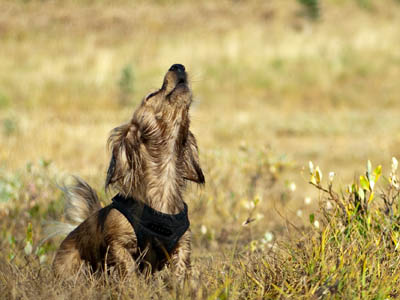Interbreeding of dogs over thousands of years has made it extremely difficult to trace the ancient genetic roots of today’s pets, according to a new study by an international team of scientists, including Dr Simon Ho.
The team analysed data of the genetic make-up of modern dogs, alongside an assessment of the archaeological record of dog remains, and found that modern breeds have little genetically in common with their ancient ancestors.
The researchers say their work could ultimately lead to new insights into dog domestication, leading to a greater understanding of evolution and origins of human civilisation.

Breeds such as the Akita, Afghan Hound, and Chinese Shar-Pei, which have been classed as “ancient”, are no closer to the first domestic dogs than other breeds because of the effects of lots of interbreeding, the study found.
Other effects on the genetic diversity of domestic dogs include patterns of human movement and the impact on dog population sizes caused by major events, such as the two World Wars, the researchers added.
In total the researchers analysed genetic data from 1,375 dogs representing 35 breeds. They also looked at data showing genetic samples of wolves, from which all dogs are originally derived.
Lead author Dr Greger Larson, an evolutionary biologist in Durham University’s Department of Archaeology, said that the study demonstrated that there is still a lot we do not know about the early history of dog domestication including where, when, and how many times it took place.
Dr Larson added: “We really love our dogs and they have accompanied us across every continent. Ironically, the ubiquity of dogs, combined with their deep history, has obscured their origins and made it difficult for us to know how dogs became man’s best friend.”
Several breeds, including Basenjis, Salukis, and Dingoes, possess a unique genetic signature, which previous studies have claimed to be evidence for their ancient heritage, the research found.
However the study said that the distinctiveness of these breeds came about because they were geographically isolated and were not part of the 19th Century Kennel Clubs that blended lineages to create most of the breeds we keep as pets today.
The study also suggested that within the 15,000-year history of dog domestication, keeping dogs as pets only began 2,000 years ago and that until very recently, the vast majority of dogs were used to do specific jobs.
The researchers added that both the appearance and behaviour of modern breeds would be deeply strange to our ancestors who lived just a few hundred years ago.
Studying modern breeds hasn’t yet allowed us to understand how, where and when dogs and humans first started their relationship.
Read the scientific publication here:
Rethinking dog domestication by integrating genetics, archeology, and biogeography
Larson, Karlsson, Perri, Webster, Ho, et al. (2012) Proceedings of the National Academy of Sciences of the USA, 109: 8878–8883